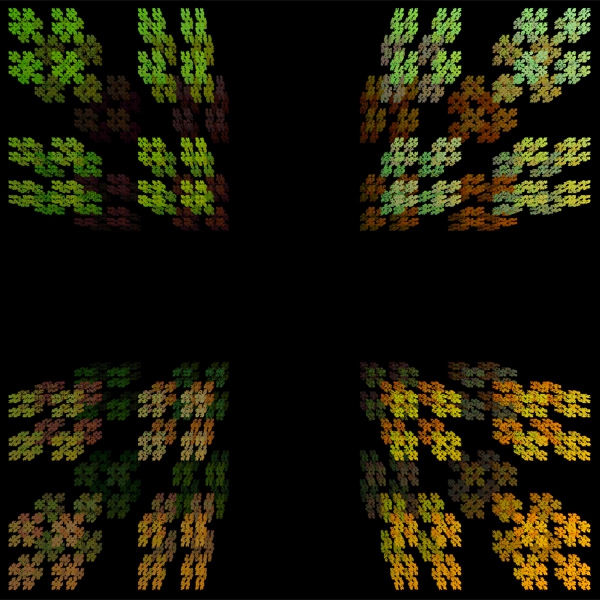This is Cantor’s cube. To make it, start with a cube. Chop it into 3×3×3 smaller cubes, and remove all of them except the 8 at the corners. Then do the same thing for each of these 8 smaller cubes, and so on, forever. The stuff that’s left is Cantor’s cube.
What’s the volume of Cantor’s cube? It’s zero! At each stage of the procedure above you multiply the volume by 8/27, since there are 3×3×3 little cubes, but you keep only 8. So, in the end there’s no volume left.
You can do the same trick in any dimension. In dimension 1, you get the famous Cantor set by starting with an interval and repeatedly removing the middle 1/3. The Cantor set has length zero, since at each stage you multiply its length by 2/3.
If we denote the Cantor set by , then Cantor’s cube is . But in fact, Cantor’s cube is homeomorphic the Cantor set! Indeed, is homeomorphic to for any .
A space homeomorphic to the Cantor set is called a Cantor space In 1910, Brouwer showed that a topological space is a Cantor space if and only if it is:
1) non-empty,
2) compact,
4) has no isolated points,
5) metrizable.
A compact Hausdorff space is metrizable if and only if it is second countable, by a spinoff of the Urysohn Metrization Theorem. So, a Hausdorff space obeying 1)-4) but not 5) must be ‘big’: that is, not second countable.
We can get such a space by putting the product topology on for an uncountable cardinal . On the other hand, if we take we get the Cantor set, . Indeed, this is one way to see that for any finite :
Another approach is to use Stone’s representation theorem. The set of homomorphisms from any Boolean algebra to the Boolean algebra has a natural topology making it a compact totally disconnected Hausdorff space. This is called the Stone space of . The Stone space lacks isolated points iff is atomless, and it is metrizable iff is countable.
There is a unique countable atomless Boolean algebra, and its Stone space is homeomorphic to the Cantor set. If we take to be an uncountable atomless Boolean algebra, its Stone space obeys 1)-4) but not 5).
The picture here was created by Solkoll. It is in the public domain, and can be found on Wikicommons.
Visual Insight is a place to share striking images that help explain advanced topics in mathematics. I’m always looking for truly beautiful images, so if you know about one, please drop a comment here and let me know!




